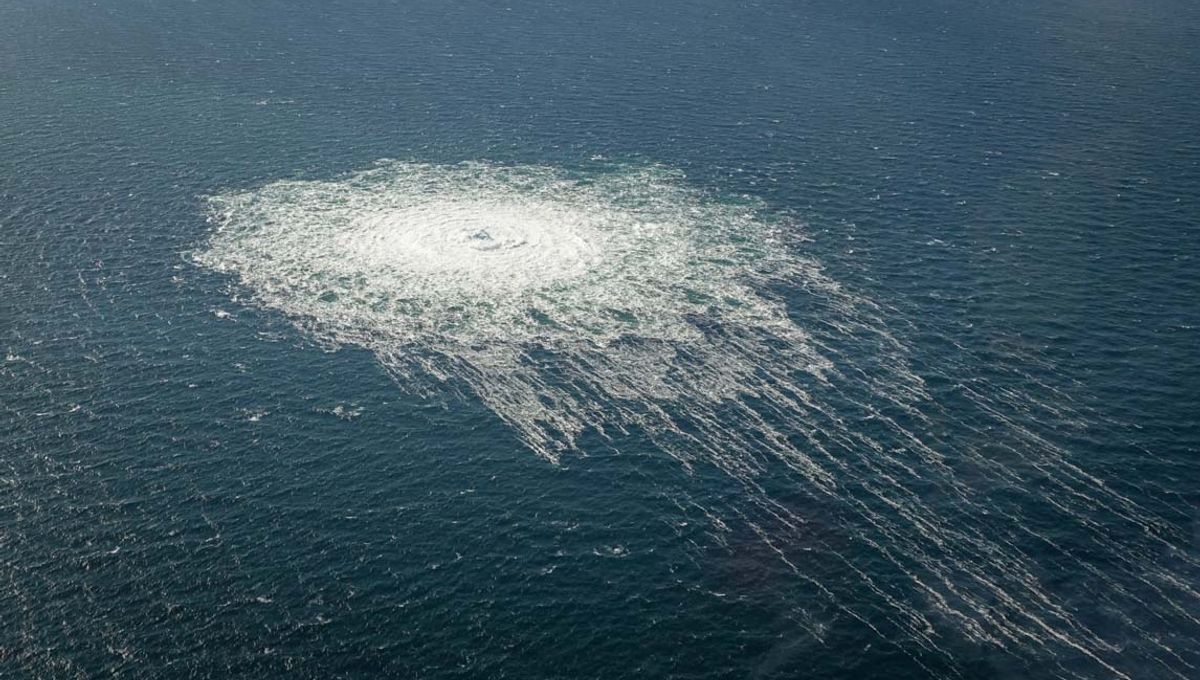
Following reports of a large leak near Nord Stream, the two key pipelines that hook natural gas from Russia to Europe, seismologists have also reported unusual activity occurring on the same day.
Even beyond the geopolitical fallout of this leak, the impact on the ecosystem and climate could be substantial, environmentalists have warned.
A total of three leaks have been detected on the gas pipelines Nord Stream 1 and Nord Stream 2 near the island of Bornholm in Denmark, according to the Danish energy authority. Similar warnings also came from the Swedish Maritime Administration, which advised ships to stay at least 9 kilometers (5 nautical miles) from the sites.
Paired with this, a seismograph from Bornholm recorded spikes in earth tremors on Monday, the day on which the pipelines underwent dramatic falls in pressure, Reuters reports. A spokesperson told the news agency: “We cannot say if that could be gas streaming out.”
No one is yet sure who or what is responsible for the leaks. In Europe, numerous authorities have said they were not ruling out sabotage by Russia, noting that three simultaneous leaks are unprecedented.
Meanwhile, Russia is “extremely concerned” about the situation, according to state news agency TASS. Kremlin spokesman Dmitry Peskov said pressure in the gas pipeline has dropped significantly and they can not yet rule out sabotage as a potential cause.
All of this comes at a time of a deepening energy crisis in Europe. Europe has accused Russia of weaponizing energy supplies in response to their invasion of Ukraine, while Moscow blames Western sanctions for supply disruptions.
While everyone is talking about the political impact of this – and who can blame them – it will also have a significant effect on the environment.
The Nord Stream pipelines are leaking natural gas, which is primarily made up of methane, a potent greenhouse gas that’s more than 25 times as potent as carbon dioxide at trapping heat in the atmosphere.
Much of this methane will bubble up to the surface of the sea and enter Earth’s atmosphere where it will contribute to further climate change. Of course, however, this gas would have burnt as a fossil fuel regardless of the leak, which would also release emissions.
There is also the more immediate impact it could have on marine life in the Baltic Sea. Just like an oil spill, a gas leak in the ocean can also cause disruption to the ecosystem. A significant portion of the natural gas will dissolve in the sea, which has the potential to turn the water toxic for fish, shellfish, and other marine life.
“In the event of a leak in the Nordstream pipeline, the gas rises directly to the water surface, i.e. the effects will probably remain local. There, however, the animals create the danger of suffocating. This applies in particular to animals that cannot escape quickly,” Nadja Ziebarth, a marine protection expert from Friends of the Earth Germany (BUND), said in a statement.
“The biggest immediate effect is, of course, that a valuable Resource is lost and at the same time freed up in greenhouse gas,” added Ziebarth.
“Pure methane is in the Seawater non-toxic, but the composition of natural gas varies depending on the deposit. Because it is unclear which mixture is transported precisely in Nordstream, other gases could cause unknown damage to the marine ecosystem locally.”
Source Link: Russian Gas Pipeline To Europe Mysteriously Springs Leak, Sparking Environmental Fears